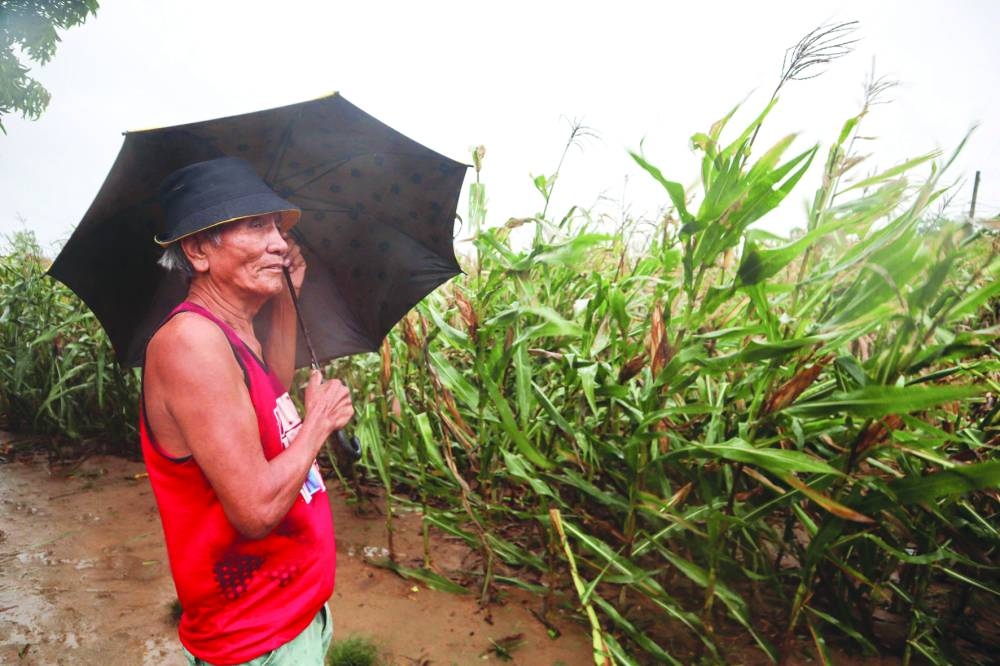More than a thousand people fled their homes as floods unleashed by Super Typhoon Saola swept through mainly rural villages in the northern Philippines, rescue officials said yesterday.
Saola brushed past the northeast of the main island of Luzon overnight Saturday and continued south just off the Pacific coast packing winds of up to 185kms per hour, the state weather bureau said.
No casualties or substantial damage have been reported.
Residents of coastal communities vulnerable to high winds and large waves were moved to higher ground on Isabela province’s Pacific coast, as were those on the northern tip of Cagayan province to the north and Ilocos Sur province on Luzon’s northwest coast, officials said.
“These coastal towns have no protection because they are directly facing the Pacific,” said Isabela rescue official Constante Foronda, putting the number of evacuees in Isabela at 372.
“It’s raining constantly but the winds are not that strong,” he said adding: “We got lucky.”
The Philippines is hit by an average of 20 major storms each year that kill hundreds of people and keep vast regions in perpetual poverty.
In neighbouring Cagayan, rescue official Ruelie Rapsing said 388 people were evacuated overnight amid flooding on several coastal municipalities on Luzon’s northeast tip.
There were also widespread electricity cuts across the province of 1.2mn people due to downed power lines, he added.
Reuters
Tokyo
Tests of seawater near Japan’s Fukushima nuclear power plant have not detected any radioactivity, the environment ministry said yesterday, days after authorities began discharging into the sea treated water used to cool damaged reactors.
Japan started releasing water from the Fukushima plant into the Pacific Ocean on Thursday, sparking protests in Japan and neighbouring countries, in particular China, which banned aquatic product imports from Japan. Japan and scientific organisations say the water is safe after being filtered to remove most radioactive elements except for tritium.
Because tritium is difficult to separate from water, the Fukushima water is diluted until tritium levels fall below regulatory limits.
The ministry’s tests of samples from 11 points near the plant showed concentrations of tritium below the lower limit of detection – 7 to 8 becquerels of tritium per litre, the ministry said, adding that it “would have no adverse impact on human health and the environment”. Monitoring would be carried out “with a high level of objectivity, transparency, and reliability” to prevent adverse impacts on Japan’s reputation, Environment Minister Akihiro Nishimura said in a statement.
The ministry would publish test results every week for the next three months at least, an official said. Japan’s fisheries agency said tests of fish from near the plant did not show any abnormalities. Its test on Saturday found no detectable levels of tritium.
Plant operator Tokyo Electric Power Co said on Friday seawater near the plant contained less than 10 becquerels of tritium per litre, below its self-imposed limit of 700 becquerels and far below the World Health Organisation’s limit of 10,000 becquerels for drinking water.

A man braves heavy showers and winds while inspecting his corn farm as Typhoon Saola brushes past Ilagan City, Isabela province, north of Manila yesterday.
